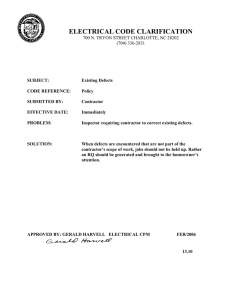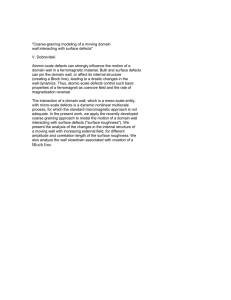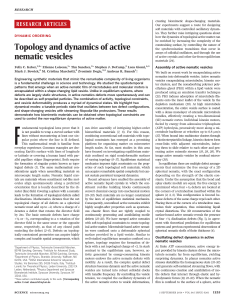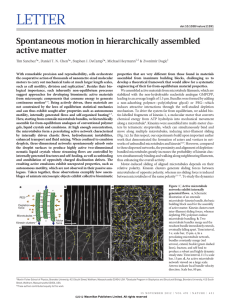Document 14459033
advertisement
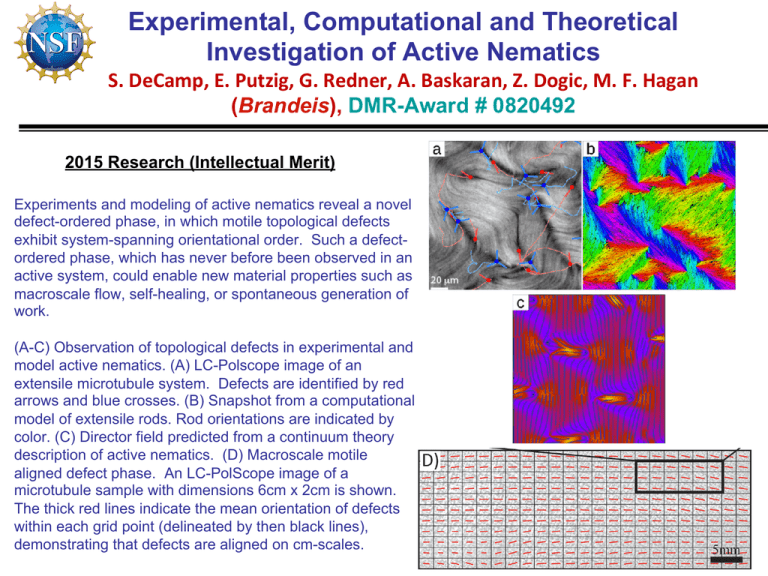
Experimental, Computational and Theoretical Investigation of Active Nematics S. DeCamp, E. Putzig, G. Redner, A. Baskaran, Z. Dogic, M. F. Hagan (Brandeis), DMR-Award # 0820492 2015 Research (Intellectual Merit) Experiments and modeling of active nematics reveal a novel defect-ordered phase, in which motile topological defects exhibit system-spanning orientational order. Such a defectordered phase, which has never before been observed in an active system, could enable new material properties such as macroscale flow, self-healing, or spontaneous generation of work. (A-C) Observation of topological defects in experimental and model active nematics. (A) LC-Polscope image of an extensile microtubule system. Defects are identified by red arrows and blue crosses. (B) Snapshot from a computational model of extensile rods. Rod orientations are indicated by color. (C) Director field predicted from a continuum theory description of active nematics. (D) Macroscale motile aligned defect phase. An LC-PolScope image of a microtubule sample with dimensions 6cm x 2cm is shown. The thick red lines indicate the mean orientation of defects within each grid point (delineated by then black lines), demonstrating that defects are aligned on cm-scales.



